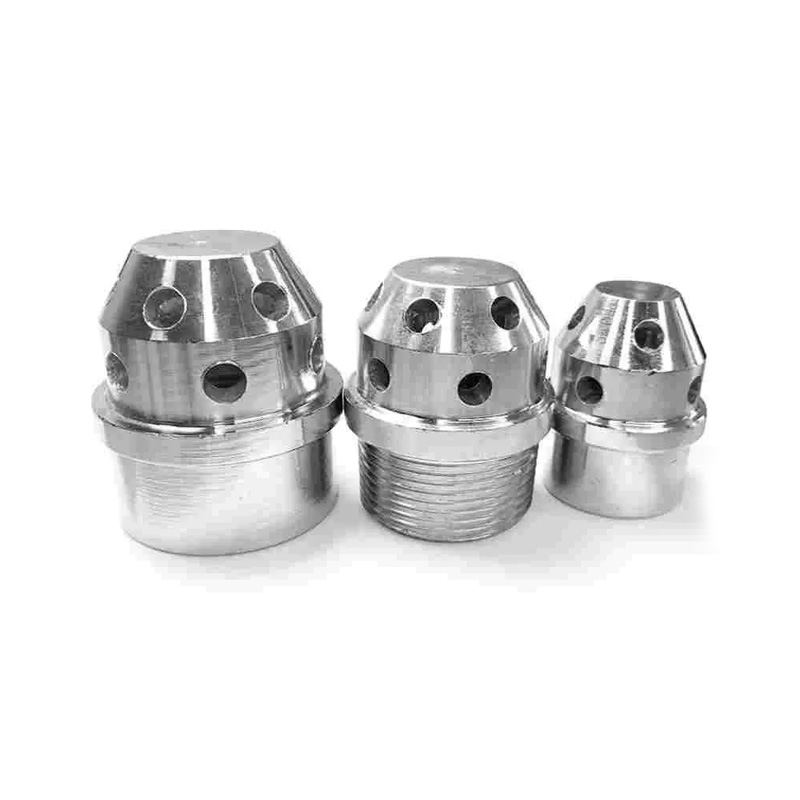
Inner wire nozzle
Internal thread nozzle refers to a nozzle with internal threads at the connection part of the nozzle. The following will introduce its characteristics, applications, installation, and other dimensions:
characteristic
Stable connection: The internal thread nozzle is connected to a pipe or joint with external threads through internal threads. This threaded connection method can provide a relatively stable connection and is not easy to loosen. It can confirm the optimal connection between the nozzle and the pipeline system during the spraying process, reducing the risk of water leakage.
Good sealing performance: With appropriate sealing materials such as sealing tape, sealing gaskets, etc., the inner wire nozzle can achieve good sealing effect, effectively preventing water leakage from the connection part and protecting the nozzle from normal operation.
Strong adaptability: Common inner thread sizes include 1/2 inch, 3/4 inch, 1 inch, etc., which can be connected to pipes and valves of different specifications, with a wide range of applications.
Application industry
Fire protection system: In the fire sprinkler system, the inner wire nozzle is one of the key components. As a concealed internal wire nozzle, it can be installed in the ceiling and can automatically spray water to extinguish a fire.
Irrigation industry: Inner wire nozzles are widely used in agricultural irrigation and garden sprinkler irrigation. Like a rotating internal wire nozzle, it can evenly spray water on crops or lawns, achieving large-scale irrigation.
Cleaning equipment: In high-pressure cleaning machines and other equipment, the inner wire nozzle can be selected with different shapes and water discharge methods according to different cleaning needs, such as fan-shaped nozzles, conical nozzles, etc., to achieve the best cleaning effect.
Installation and usage precautions
Preparation before installation: Check whether the specifications and models of the nozzle meet the requirements for use, and whether the inner wire is intact and undamaged. At the same time, clean the debris and burrs at the pipeline connection end, and confirm that the connection surface is flat and smooth.
Installation process: Wrap an appropriate amount of sealing tape or apply sealant on the thread, and then screw the nozzle clockwise into the pipeline or joint, being careful not to apply excessive force to avoid damaging the thread.
Usage and maintenance: Regularly check the working status of the nozzle. If the nozzle is found to be blocked, a one-on-one tool can be used for disassembly and cleaning; If the nozzle is damaged, it should be replaced in a timely manner.
Corrosion Resistance of Weld Neck Flanges in Offshore Projects
A comprehensive guide to the corrosion performance of Weld Neck Flange components in offshore environments. Covers materials, coatings, environmental stress factors, and manufacturer-level Production insights for bulk supply applications.
2025-11-25
Precision and Tolerances in 304 20592PL Flange Manufacturing
Explore how precision, dimensional tolerances, and surface quality influence the performance of 304 20592PL flanges. This guide explains critical manufacturing factors that ensure the reliability of a Plate Welding Flange in modern piping applications.
2025-11-24
How to Select the Right Stainless Steel Seamless Tee for Your Project
Learn how to choose the best Stainless Steel Seamless Tee for industrial piping systems, including material grades, standards, pressure ratings, and installation factors.
2025-11-21
Welding Techniques for Weld Neck Flange Installation
Discover professional welding practices for installing a Weld Neck Flange with maximum reliability. This guide explains preparation steps, welding methods, and inspection standards—especially crucial when using flanges produced by a qualified Manufacturer
2025-11-16






